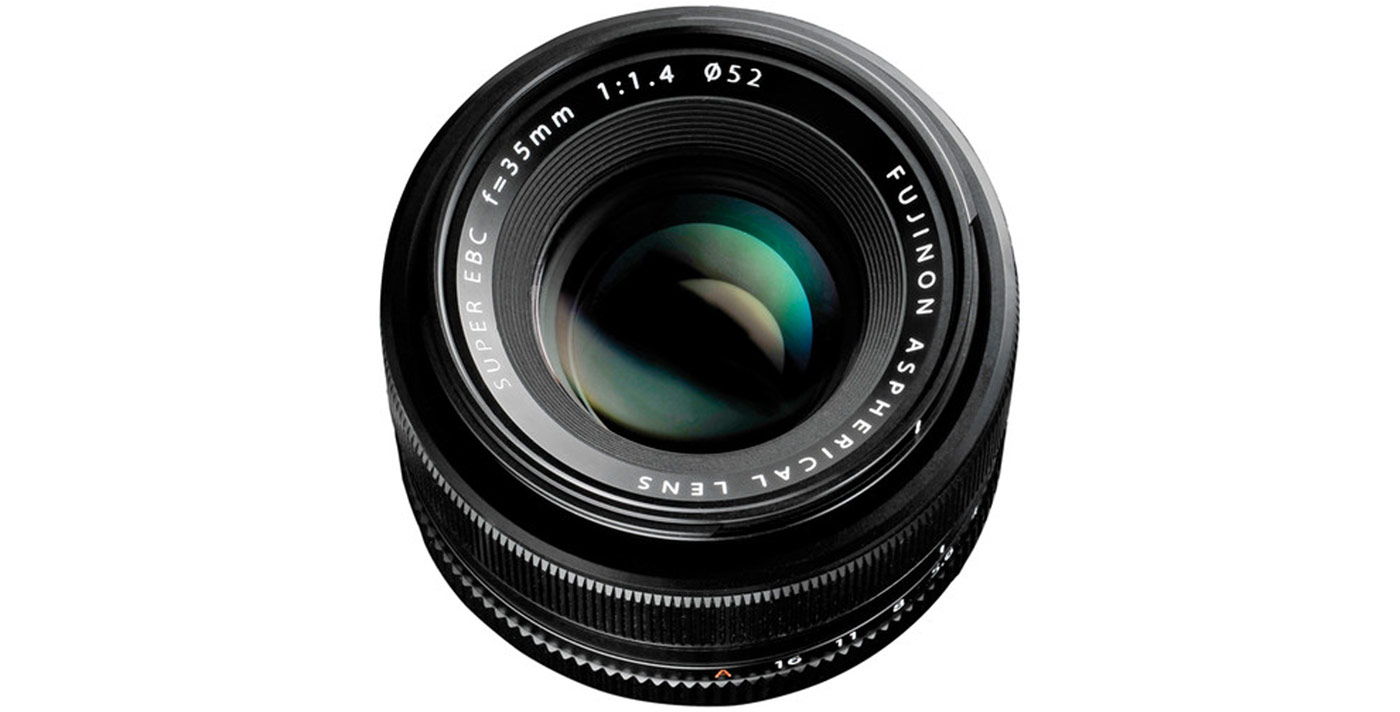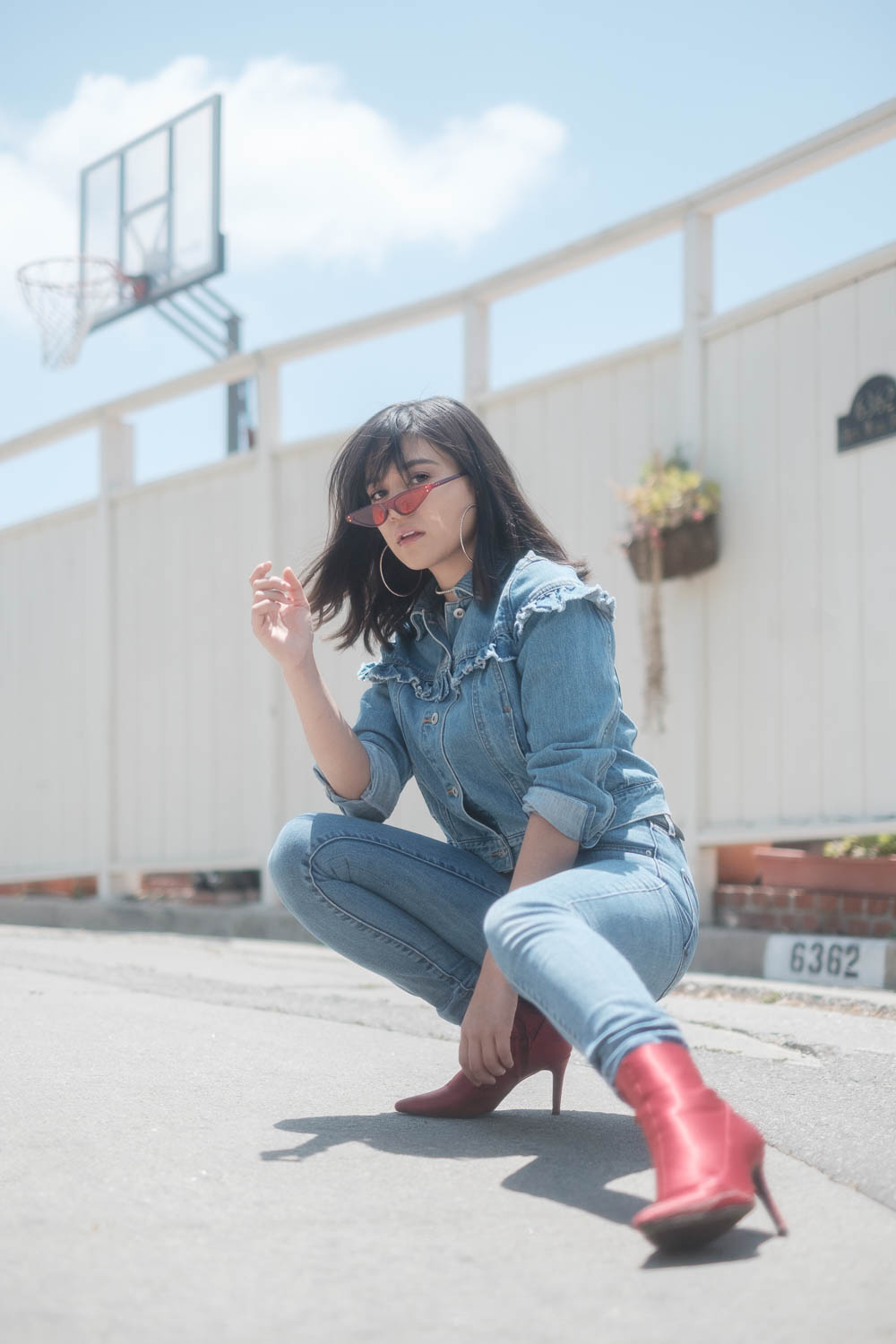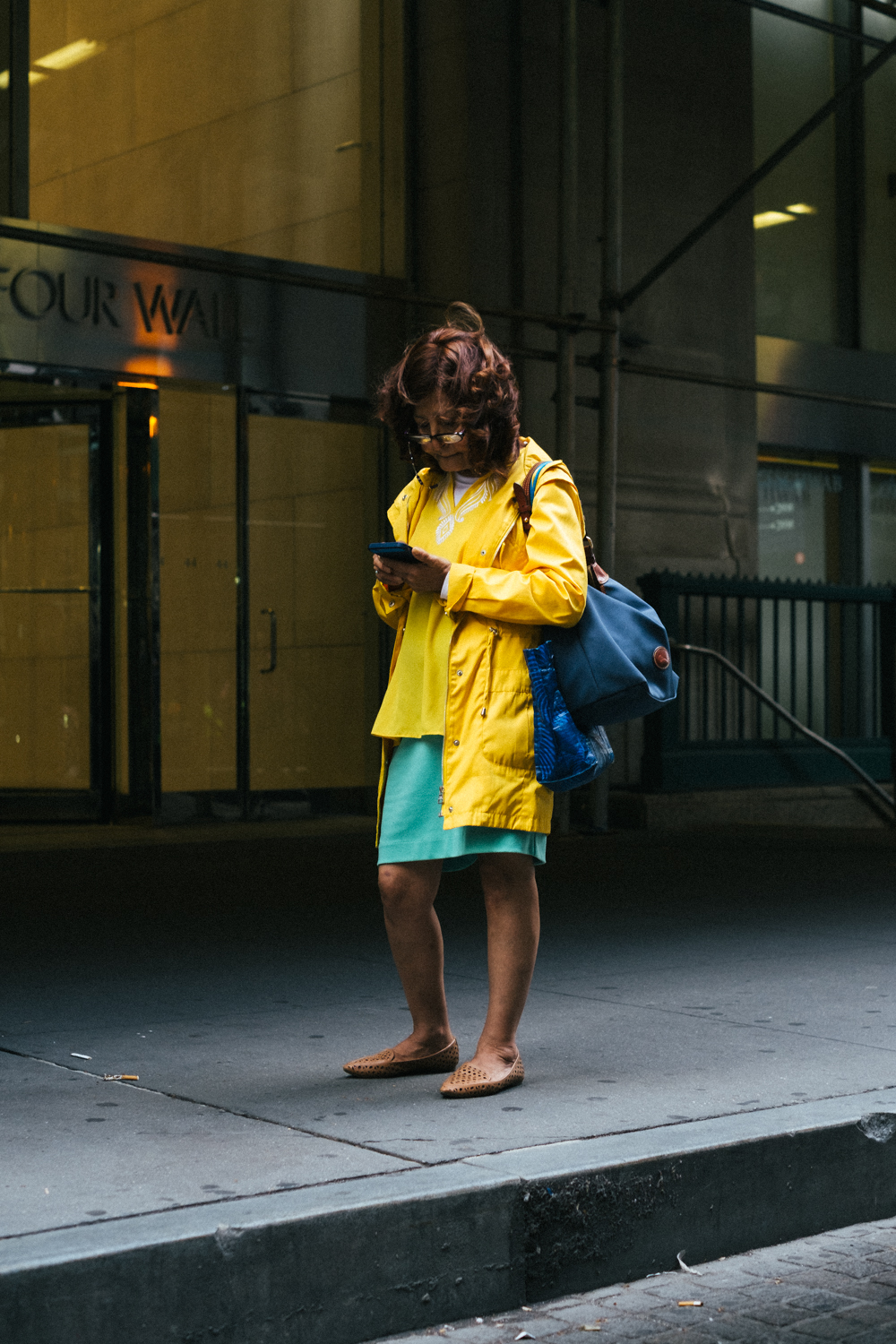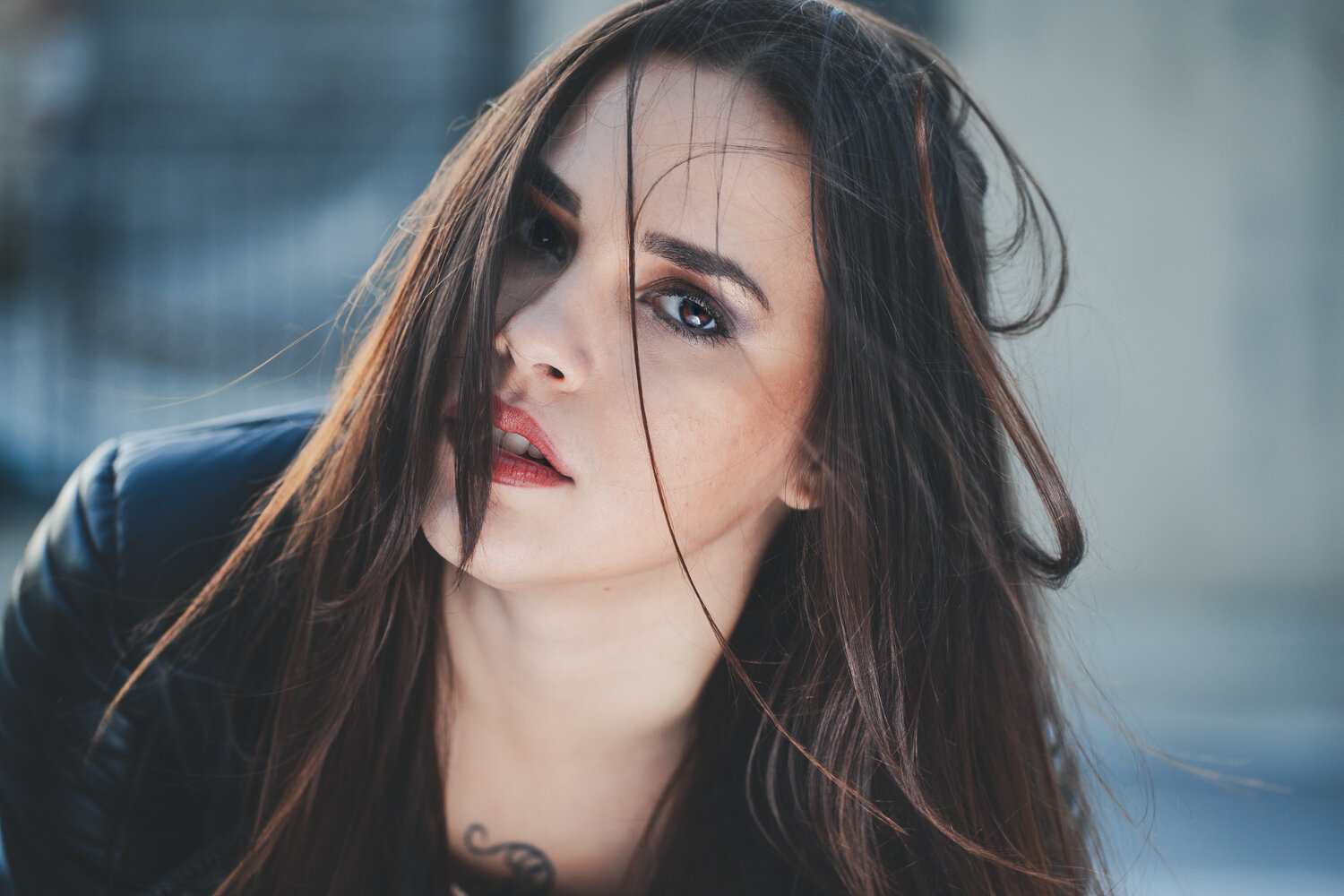Fuji XF 35mm f/1.4 Lens Review: Is It the Best Fuji Lens?
Ok, "best" might be subjective. But I'm about to make a case for why the Fuji XF 35mm f/1.4 lens is the most impressive piece of glass Fuji has ever developed.
The Fuji XF 35mm f/1.4. Image courtesy of B&H.
Update: this article has been updated to reflect the Fuji 35 1.4’s relevancy in a landscape with competitors like the Mitakon 35 .95 and more.
Fujifilm has gobbled up more and more of the marketshare due mostly to their versatile line of quality lenses. With more high-profile offerings like the 16mm f/1.4 or the 90mm f/2, you might not pay much attention to the older and cheaper Fuji XF 35mm f/1.4.
That would be a mistake.
A deer on Fire Island. Fuji X-pro 2, Fuji XF 35mm f/1.4.
Sophia Black in the Hollywood Hills for Aaro Entertainment. Fuji X-Pro 2, Fuji XF 35mm f/1.4.
Technical Specs of the Fuji XF 35mm 1.4 Lens
Lens Construction: 8 elements, 6 groups
Focal Length: 35mm – equivalent to a 53mm on a full-frame sensor
Aperture Range: f/1.4 – f/16 in ⅓ stop increments
Aperture Type: 7 blades
Focus Range: Approximately 8cm - ∞ (infinity)
External Dimensions: 65mm diameter × 50.4mm long
Weight: 6.5 ounces
Weather sealed: no
Image stabilization: no
Distortion: minimal
Chromatic Aberration: minimal
Vignetting: Slight darkening in corners when wide open, reduced by more than half when stopped down to f/2
Red alert: for some photographers, the lack of weather sealing is important. In fact, it can be reason enough to pick up the Fuji XF 35mm f/1.4's weather sealed little brother, the Fuji XF 35mm f/2. With arguably comparable optics, you won't feel too bad about sacrificing the additional aperture stops if shooting in the rain or snow is important to your work.
The Fuji XF 35mm f/1.4 lens is a coat pocket-sized prime with a lovely metal construction. Photographers coming from the Nikon or Canon world of standard lenses will be tickled by the physical aperture ring for use in manual or aperture priority modes (otherwise, just set the ring to 'A' for auto). The aperture ring has a solid-enough give to it – I've never had my aperture shift without my intention, but it seems like something that could be an issue with lenses of a lesser build quality.
Man in Two Bridges, Manhattan. Fuji X-pro1, Fuji XF 35mm f/1.4.
IVF medications. Fuji X-pro1, Fuji XF 35mm 1/125 @ f/4 ISO 200
Before you get into the meat of this article, you may be curious about how the Fuji stacks up against its competition in 2020 - namely, the Mitakon 35mm f/.95 and the fellow Fuji 35mm f/2 WR.
There are other budget options on the market like the 7Artisans and the Neewer options, and they’re worth a look as a novelty lens, but comparing them to the Fuji or Mitakon options would be like comparing apples and oranges.
Because the point of this article is to share our thoughts on the Fuji 35mm f/1,4, I won’t spend too long on these “vs” comparisons, but to give you a clear idea of the pros and cons of each (of which there are many valid points to be made), you can take a look at the following section and see which lens might be best suited for you.
Mitakon 35mm f/.95 vs Fuji XF 35mm f/1.4
Mitakon is an interesting brand that’s gained some popularity with Fuji hobbyists in the past year. They offer affordable ultra-fast primes for the Fuji mount with some unique focal lengths. The catch? A sometimes-shoddy build quality and no auto-focus whatsoever — which ends up mattering a lot when you’re shooting wide open at f/.95.
When it comes to edge-to-edge sharpness, the Fuji 35mm wins out by a mile. Center clarity is also stronger on the Fuji. Where the Mitakon has a real edge is in the rolloff from in-focus to out-of-focus. If you’re concerned only with bokeh and aren’t held back by manual focusing, you might enjoy the Mitakon 35mm f..95.
Fuji XF 35mm f/1.4 vs Fuji XF 35mm f/2 WR
Candidly, I don’t love the Fuji 35mm f/2. It’s a bit cheaper than the 1.4, and on paper, it’s certainly up to snuff: other than a cheaper build quality (plastic vs metal) and a slower aperture, you could even make the case that it’s a better lens.
But for my taste, the 1.4 wins out. It has this sort of dreamy character (more about that in the review further down), and in the arena of sharpness, I think the 1.4 takes the cake. But if weather sealing is a big priority for you, you might disagree.
Now, back to the scheduled Fuji 35mm f/1.4 review.
Autofocus vs Manual Focus on the Fuji XF 35mm f/1.4
Autofocus is reasonably fast under ideal lighting conditions due to the electronic focus motor built in to the lens. Focus accuracy, of course, will depend on the sophistication of your camera body.
In low light, this lens has been known to hunt. Overall, the focusing prowess of the Fuji XF 35mm f/1.4 is outpaced by its younger brother, the 35mm f/2.
Through subsequent firmware updates, Fuji has combatted the loud 'chatter' of this lens when shooting on a mode that requires the aperture to stop down to meter your exposure (so anything not manual or aperture priority). The sound is still there, but it's much less obtrusive than it used to be.
When it comes to Fuji's lenses, manual focus is operated using a'fly-by-wire' system. Essentially, the focusing ring isn't mechanically connected to any of the lens elements, and the manual focus is painstakingly slow and precise. It's best to use autofocus to get your subject in range of focus and fine-tune it with the focus ring.
A man waiting for the ferry. Fuji X-pro1, Fuji XF 35mm f/1.4.
A man in Penn Station. Fuji X-pro1, Fuji XF 35mm 1/125 @ f2.8 ISO 1600.
Is the Fuji XF 35mm f/1.4 Sharp?
Yes. It is very sharp. The optics on this lens are absolutely gorgeous (helped along by Fuji's X-Trans sensor having no anti-aliasing filter). Wide open at 1.4, you may notice a very slight declination in sharpness around the edges, but with such a razor thin area in focus, it's almost never apparent.
This is especially useful in portrait photography. Unlike most primes, portraits shot with the Fuji XF 35mm f/1.4 can be shot wide open without sacrificing noticeable sharpness, giving you creamy subject isolation.
Nicole shooting Fuji. Fuji X-Pro 2, Fuji 35mm f/1.4
Does the Fuji XF 35mm f/1.4 Flare?
Fuji uses a proprietary Super EBC lens coasting to mitigate ghosting and flaring. But if you choose not to use a lens hood... yes, it does flare, and it's a lovely thing!
A man in Two Bridges, Manhattan. Fuji X-pro1, Fuji XF 35 mm 1/250 @ f/8 ISO 200.
The Fuji X-pro1's infamous back-focusing grabbed the cityscape in this shot, but at f/8, there are no unsightly blurry areas. I shoot without a lens hood and embrace flaring when it happens, and I was pleasantly surprised to find that the Fuji 35mm 1.4 retains an impressive amount of contrast and detail when flaring.
What It's Like to Shoot with the Fuji XF 35mm f/1.4 Lens
Unless you're a seasoned street photographer who's comfortable shooting at 16mm, this is the definitive walk-around lens.
A 35mm focal length on a crop sensor body is equivalent to 53mm on a full frame camera. For street or environmental portraiture photographers, it's the perfect focal length for grabbing an intimate candid scene without getting confrontational with your subjects.
Buildings in the West Village, NYC. Fuji X-Pro 1, Fuji 35mm f/1.4
It's long enough to shoot headshots and 3/4 portraits with minimal distortion, and wide enough to nail full-body fashion work and larger scenes. However, the 53mm equivalent is too tight for things like group photos at a party or architecture.
Stop down to f/16 to shoot a landscape, and you won't notice any visible diffraction.Wide open, it's fast enough to shoot candlelit dinners. Plus... the bokeh at f/1.4 is insane.
The 2 train in Manhattan. Fuji X-pro1, Fuji XF 35mm 1/125 @ f/1.4 ISO 400.
Here's Why The Fuji XF 35mm f/1.4 is So Impressive
More important than sharpness, autofocus speed, or build quality is something a bit more ineffable: the 'character' of the lens.
You can benchmark contrast or bokeh roundness, but sometimes, the marriage of certain optical elements produces a unique look and feel. The Fuji XF 35mm f/1.4 has scores of dedicated loyalists across the world who've fallen in love with the color reproduction and woozy mix of sharpness and creaminess produced specifically by this lens.
It's image quality has been compared to that of the human eye – tack sharpness at the focus point of the photograph, with a gradual, dreamy fall-off into softness.
Whether you agree or not, a quick scroll through the Flickr page for this lens strongly supports the concept that this lens flavors its images with a distinct look. It's a love-it-or-hate-it, stylized aesthetic, but I haven't been able to stop shooting with it since I picked it up.
Farmer's market on Christopher Street in Manhattan. Fuji X-pro1, Fuji XF 35mm 1/125 @ f/9 ISO 200
Fuji Lens Reviews for Your Fujifilm Mirrorless Camera
If you're hunting for the perfect lens to go with your Fuji body, check out a comprehensive list of our Fuji lens reviews below:
Best Fuji Lenses for Portrait: Buying Guide – A rundown of the top lenses tailor-made to deliver perfect portraits.
Fujinon XF 90mm F/2 Lens Review – A weather-resistant lens with stunning optics, perfect for portraiture, wildlife, landscape, and more
Rokinon 12mm f/2 Lens Review – A manual focus with superb image quality and a creative focal length
Fuji XF 16mm f/1.4 Lens Review – A versatile wide-angle and one of the top performers in the entire Fuji line-up
Helios 44-4 58mm f/2 Lens Review – A vintage Russian telephoto prime with a distinctive bokeh



















